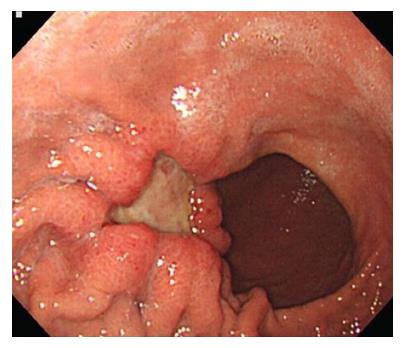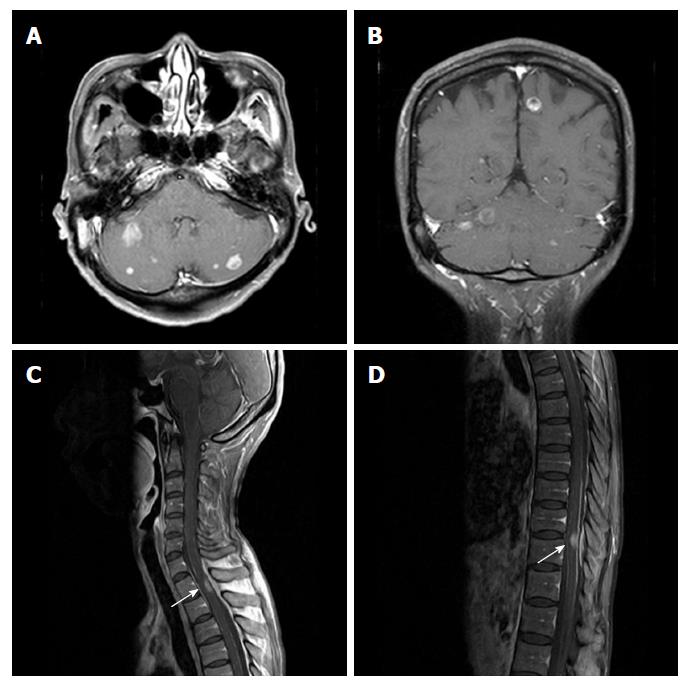Copyright
©The Author(s) 2018.
World J Gastroenterol. Feb 7, 2018; 24(5): 651-656
Published online Feb 7, 2018. doi: 10.3748/wjg.v24.i5.651
Published online Feb 7, 2018. doi: 10.3748/wjg.v24.i5.651
Figure 1 Esophagogastroduodenoscopy revealed a 3-cm sized ulcerofungating mass on the anterior wall of the greater curvature of the gastric body.
Figure 2 Magnetic resonance imaging of the lumbosacral spine.
Axial (A, B) and sagittal (C) contrast-enhanced T1-weighted imaging of the spine MRI shows a focal dural mass with invasion to the right L5 and S1 nerve roots at the L5-S1 level. MRI: Magnetic resonance imaging.
Figure 3 Magnetic resonance imaging of the brain.
On axial (A) and coronal (B and C) contrast-enhanced T1-weighted imaging of the brain MRI, a homogenous, enhancing dural mass is visible at the left cerebellopontine angle cistern (A and B) invading the left trigeminal nerve and internal auditory canal (C). MRI: Magnetic resonance imaging.
Figure 4 Magnetic resonance imaging of the brain and spine.
On axial (A) and coronal (B) contrast-enhanced T1-weighted imaging of the brain MRI revealed multiple enhancing nodules at the cerebral and cerebellar hemispheres. On sagittal contrast-enhanced T1-weighted imaging of the spine MRI revealed eccentric nodular enhancement at spinal cord at T1/2 (C) and T10/11 (D). MRI: Magnetic resonance imaging.
- Citation: Kim H, Yi KS, Kim WD, Son SM, Yang Y, Kwon J, Han HS. Sequential spinal and intracranial dural metastases in gastric adenocarcinoma: A case report. World J Gastroenterol 2018; 24(5): 651-656
- URL: https://www.wjgnet.com/1007-9327/full/v24/i5/651.htm
- DOI: https://dx.doi.org/10.3748/wjg.v24.i5.651












